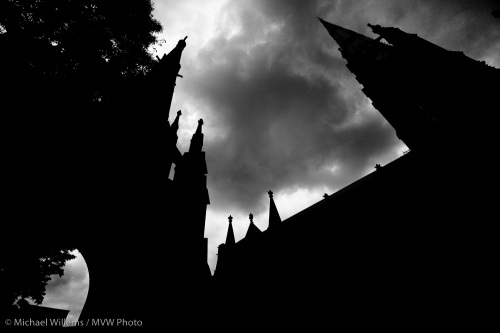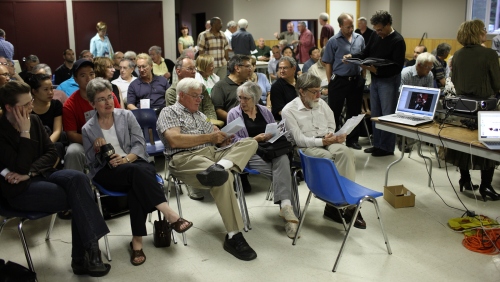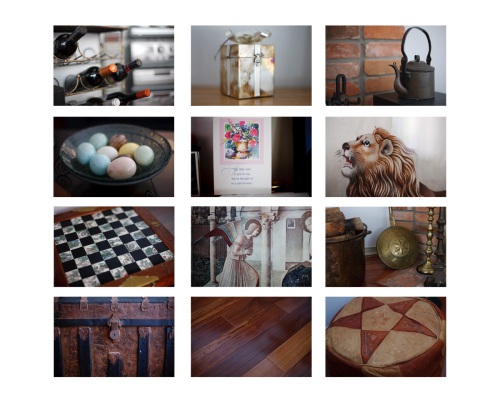I have always thought that for clarity, “white balance” should be called “colour balance”.
White balance means “interpret the red-blue-green respective channels to match the colour of the light hitting the subject, in order to neutralise the colour cast”. Your camera does this every time (Auto White Balance, or AWB).
When it gets it wrong, which sometimes happens, you see a red, or blue, or green cast to the light. In that case, you can correct this by manually telling the camera the colour of the incident light. Setting the white balance, in other words.
So you go from this (tungsten light):
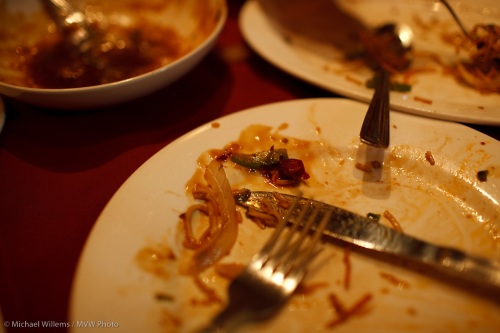
To this (corrected).
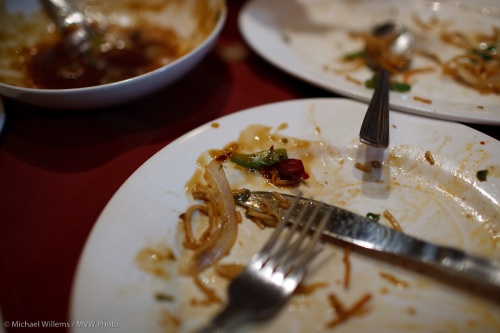
That was the chili chicken I had with Baz Kanda, a very talented Ottawa/Mississauga photographer, just the other day. Or rather, it was the remains after we had eaten the chicken. And a photographer plays with his camera even when eating dinner. And when you use a fast lens, like the 35mm f/1.4 I was using here, available light is enough.
TIP: if you shoot RAW (which I do 99.9% of the time) you can leave your camera on “auto” at all times and do it in Lightroom or Photoshop later, on your computer. By clicking on a white item (e.g. the place) with teh white balance dropper. Yes, that’s a bit more work while editing – but it’s also a lot less work while shooting. Guess what I prefer, so I can concentrate on the Chilli Chicken?



